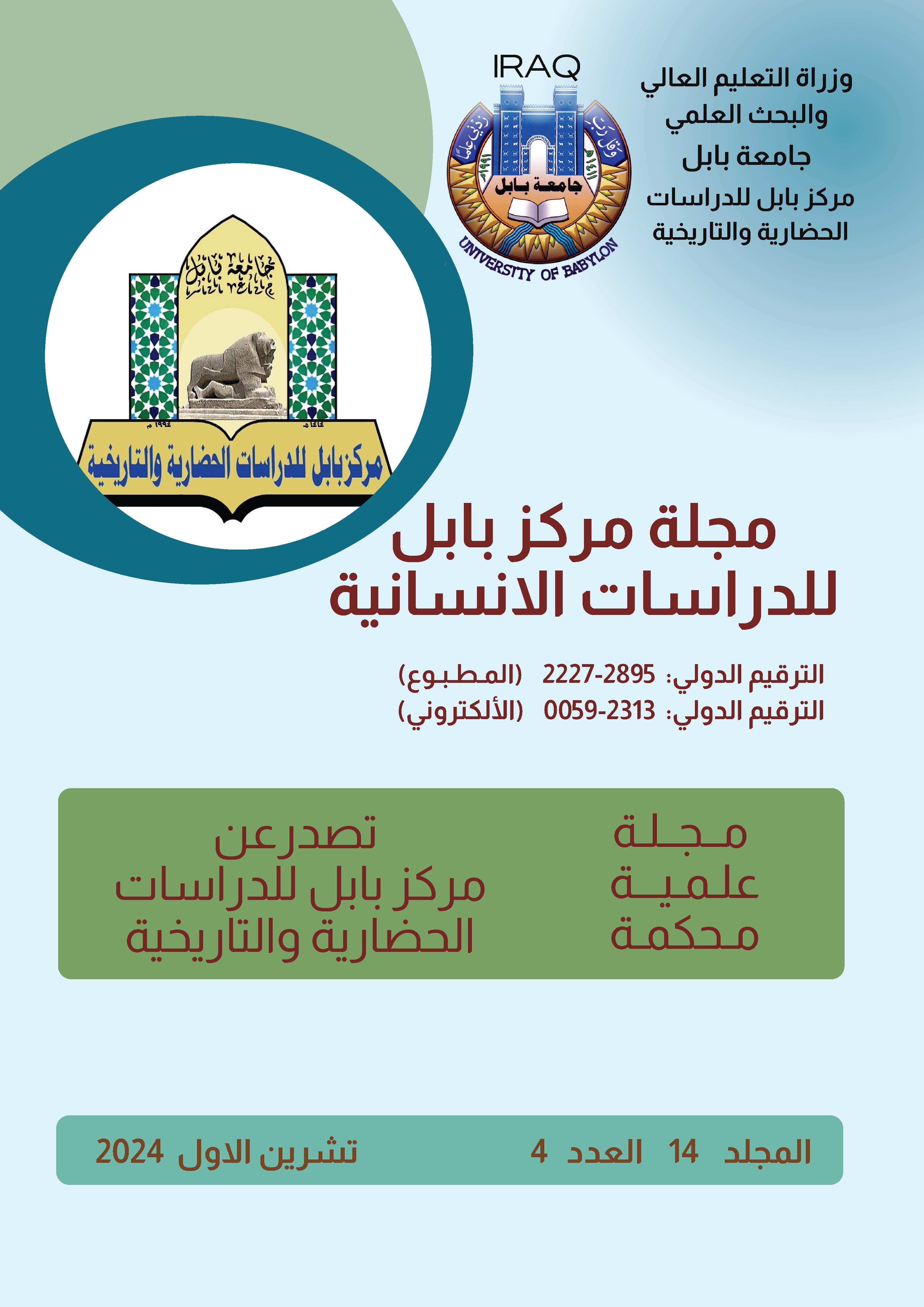دراسة دور الطبيعة في رسم صورة الآخَر المستكبر في أدب المقاومة دراسة صورولوجية؛ الأشعار العربية عن الشَّهيدين أنموذجا
الكلمات المفتاحية:
الصورولوجية - الأنا والآخر- أدب المقاومة – الاستكبارالملخص
فُجع العالم عام 2021 بعد سماع خبر مفجع ألا وهو اغتيال اثنين من فحول قادة المقاومة الشهيد قاسم سليماني والشهيد أبي مهدي المهندس إذ يتحدث الكل ويكتب عن الخبر من الجوانب المختلفة فبدأ شاعر المقاومة ينعي ويوعي ليهدئ مشاعر الغضب التي تأججت في صدره ورسم عبر تلك القصائد صورا متنوعة عن الاستكبار والآخر المستكبر لا سيما الأمريكي منه تعكس رؤيته للاستكبار والمستكبر.
یعمد هذا البحث إلی دراسة الصور التي رسمها شعراء المقاومة من البلدان المختلفة عن الاستكبار وأنواعه والملامح التي عدها كل منهم لهذا الآخر المستكبر دراسةً مقارنةً تجاه حادث اغتيال الشهيدين دراسة مقارنة صورولوجية.
سيعرض البحث أبرز الصور الحسية والمادية عن الآخر الأمريكي المستكبر في أشعار المقاومة مبينيا دور الطبيعة في تجلي صورة الآخر الأمريكي المستكبر إضافة إلى ذكر الملامح التي تكمن وراء تلك الصور الحسية للآخر الأمريكي والصور الفنية التي وظفها الشعراء في رسم الصور تلك الحسية.
لقد توصلت الدراسة إلى عدة نتائج أبرزها:
قيام الشاعر بوصف الطبيعة على أساس طبيعة المقاومة والاستكبار من أجل تعريف ثنائية الأنا المقاومة والآخر المستكبر فتكون الصور التي استحضرها الشعراء من بطن الطبيعة وظواهرها إيجابية وسلبية.
استفادة الشاعر من أقوى المفردات والظواهر المادية لتكون هي الدالة على مثابرته فيما يطالبه من الثأر والانتقام. فيستضيف في قصيدته عبارات ومفردات موحية تدل على القوة والحيوية والعزم النابع عن الغضب وطلب الثأر.
يحاول الشاعر المقاوم رسم بعض الملامح المادية في صور بيانية عدة لا لوصف الطبيعة وما يتعلق بها وإنما هو من أجل إقامة مفاهيم معنوية تكمن وراء تلك الصور كمفهوم القوة والضعف والفشل والانتصار والموت والحياة.
أكثر المفاهيم التي رامها الشعراء وراء تلك الصور الحسية هي: ضعف قوى العدو وترسيخ مدى وهن القدرات التي يتكئ عليها الاستكبار من جانب وقوة محور المقاومة وقادتها وزعزعتهم كيان الغاصب الظالم والقضاء عليه أو الوعد بالمستقبل المظلم الذي ينتظره من جانب آخر.







